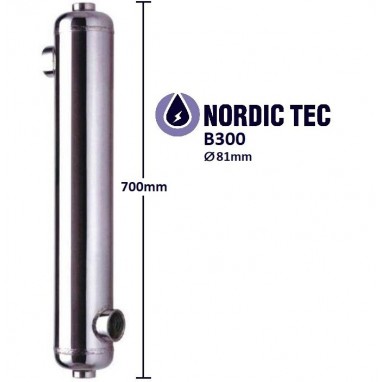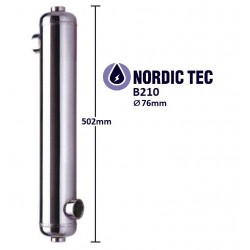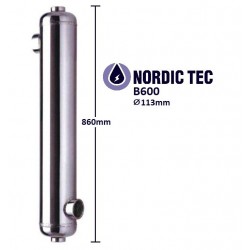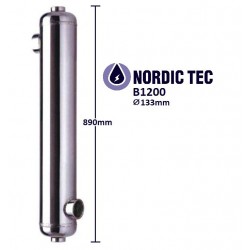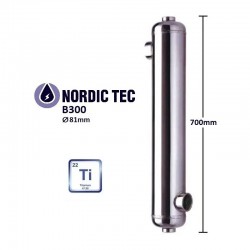Pool Heat Exchanger NORDIC B300 88kW (300kBTU/h)
Swimming Pool Heat Exchanger B300 88 kW - Nordic Tec B-Serie
- Nominal Capacity: 88kW
based on 60 °C difference between heating and heated medium (water to water),
with counter-courent work - Material: Stainless steel
- Heat Exchange surface: 0.64 m²
- Connections: 2x 2" & 2x 1 1/2"
Important Note: If one of media is glicol, the capacity will be only 85-90% of nominal one
Heating device for heating water in a pool - outdoor or indoor, providing heat exchange between the pool water and the heat source. Heat exchanger for heating the pool with a power of 88 kW.
☑️ Delivery possible in almost every area in Europe
✅ Free delivery in: FR, IT, ES, DE, PL, SI, AT, DK, NL, BE, CZ, LV, EE, LT
Reference: B300
Condition New
Technical Details - Pool heat exchanger B300
- Nominal capacity of a pool heat exchanger B300 - 88 kW
60 °C = 100%
50 °C = 85%
40 °C = 70%
30 °C = 55%
The nominal flowrates values are also required to achieve the declared capacity.
- Nominal flowrates: 42/325 l/min (one of opportunities)
- Permitted media - all except so called agressive media, including ammonia and salt/sea water
If you want to use salt water you should use a exchanger made of titanium - for example a titanium heat exchanger B300 of 88 kW
- Maximal temperature - up to 208°C (406 °F)
Basic application of this pool heat exchanger - B300
- The primary application is as a heat exchanger for heating water in pools, spas, or hot tubs
- Heat exchanger for systems with low pressure drops - e.g., for underfloor heating (with proper selection)
- Defrosting driveways and parking lots.
- Fireplaces, boilers, and other heating devices related to central heating and domestic hot water
- Industrial application as oil coolers, engine coolers, drive systems, and sample coolers in boiler installations
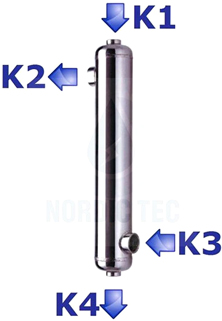
Connecting a B300 heat exchanger for heating a pool
- K1 - heating water - IN
- K2 - heated water - OUT
- K3 - heated water - IN
- K4 - heating water - OUT
Pool heat exchangers, including models used for heating water in the pool such as all those from the Nordic Tec B-Series, are connected in a counter-current manner to achieve maximum heat transfer efficiency. Failure to connect them in this way results in significant limitations in efficiency, effectively leading to the dysfunction of pool heating.
B300
240 Items
New
No reviews
You might also like
